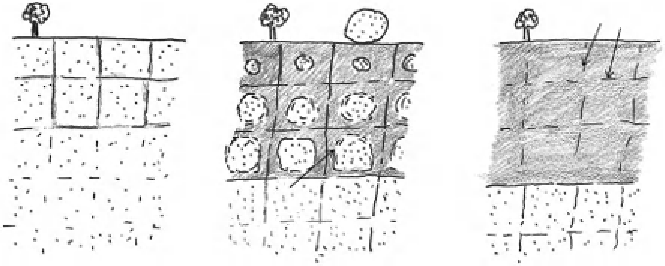Geology Reference
In-Depth Information
Stage 1
Staining along joints
Stage 2
Weathering in from joints
Stage 3
All corestones weathered
Sharp weathering front
Boulder left behind by
weathering front
Relict joints in saprolite
Exfoliation of
corestones
Joints at depth incipient only
Note that spacing of main joints remains constant
weathering front penetrates in to the rock mass.
Figure 3.54
Schematic
weathering pro
le
with corestone
development, after
Ruxton & Berry
(1957), modi
5
ed by
4
Hencher et al.
(2011).
3
2
1
Chemical weathering rarely occurs to depths of more than 100m,
even in tropical and sub-tropical areas, but this should only be used as
a general guide to current situations; sometimes weathered pro
les are
encountered at much greater depths, having their origins in some past
landscape and time. For example, Younger & Manning (2010)
describe tests on a highly permeable zone in granite at a depth of
410m and attribute the high permeability to weathering during the
Devonian when the granite was exposed at the surface. Ollier (2010)
provides other examples of ancient weathering pro
les buried by later
sediments.


